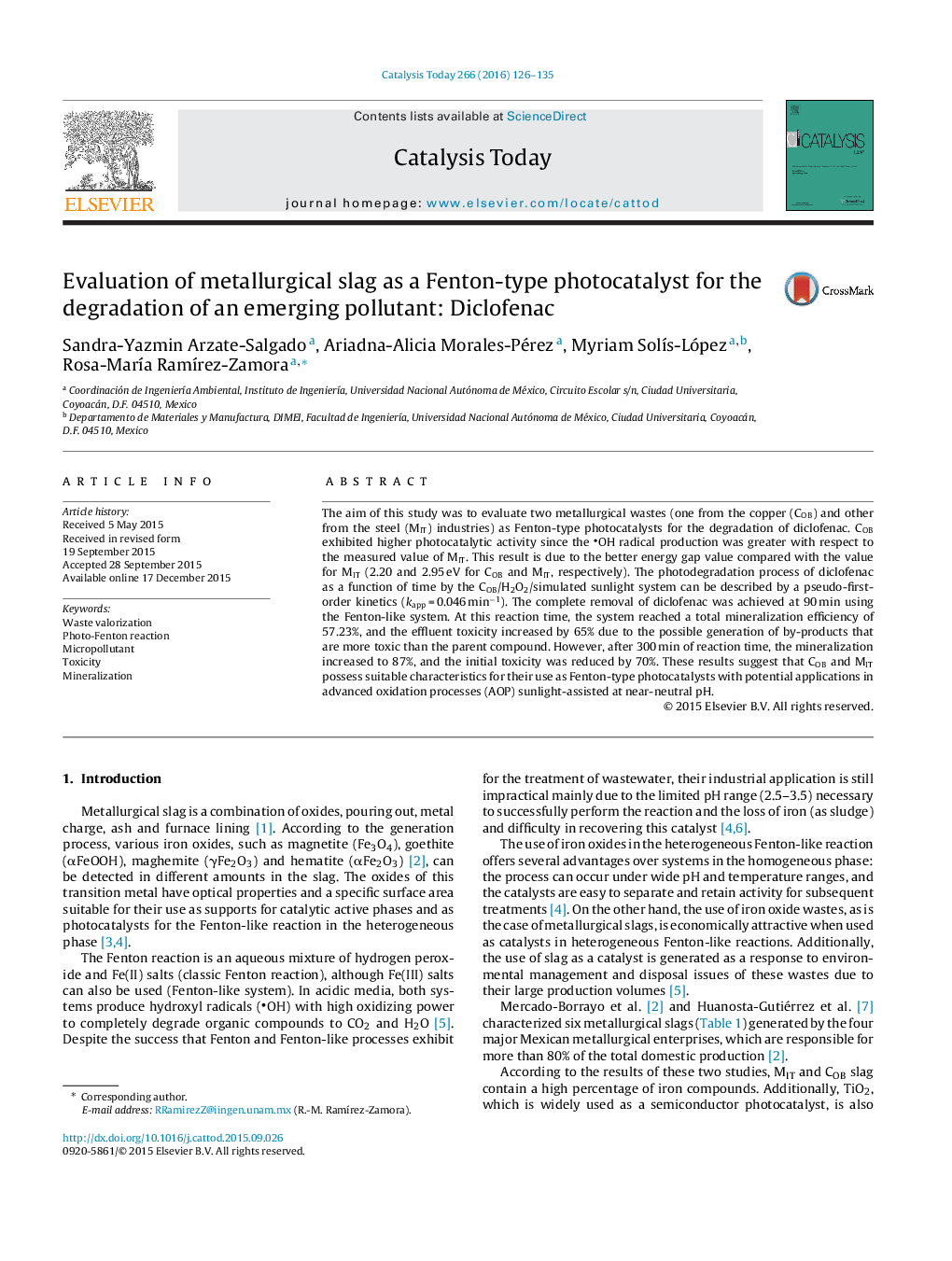| Article ID | Journal | Published Year | Pages | File Type |
|---|---|---|---|---|
| 53687 | Catalysis Today | 2016 | 10 Pages |
•A non-conventional catalyst was evaluated for DCF photodegradation by an AOP.•Complete depletion and a partial mineralization of DFC were achieved with the COB/H2O2/sunlight system at pH 7.•The DCF degradation rate was similar to data reported for Fe nanoparticles fixed on ZSM5.
The aim of this study was to evaluate two metallurgical wastes (one from the copper (COB) and other from the steel (MIT) industries) as Fenton-type photocatalysts for the degradation of diclofenac. COB exhibited higher photocatalytic activity since the OH radical production was greater with respect to the measured value of MIT. This result is due to the better energy gap value compared with the value for MIT (2.20 and 2.95 eV for COB and MIT, respectively). The photodegradation process of diclofenac as a function of time by the COB/H2O2/simulated sunlight system can be described by a pseudo-first-order kinetics (kapp = 0.046 min−1). The complete removal of diclofenac was achieved at 90 min using the Fenton-like system. At this reaction time, the system reached a total mineralization efficiency of 57.23%, and the effluent toxicity increased by 65% due to the possible generation of by-products that are more toxic than the parent compound. However, after 300 min of reaction time, the mineralization increased to 87%, and the initial toxicity was reduced by 70%. These results suggest that COB and MIT possess suitable characteristics for their use as Fenton-type photocatalysts with potential applications in advanced oxidation processes (AOP) sunlight-assisted at near-neutral pH.
Graphical abstractFigure optionsDownload full-size imageDownload high-quality image (120 K)Download as PowerPoint slide
